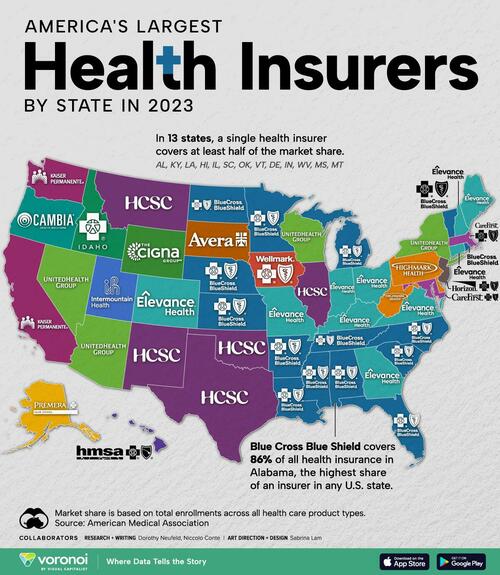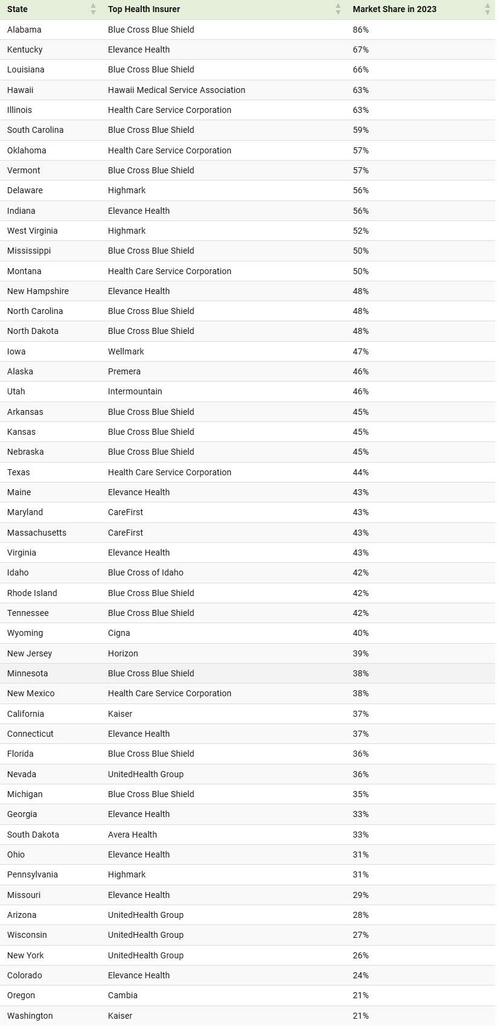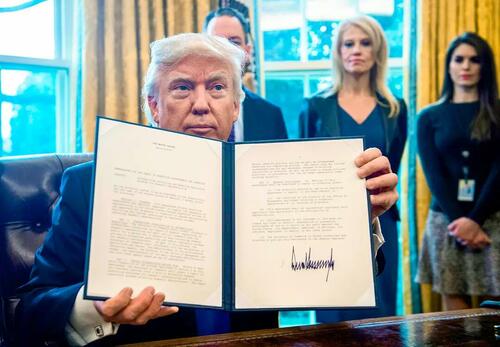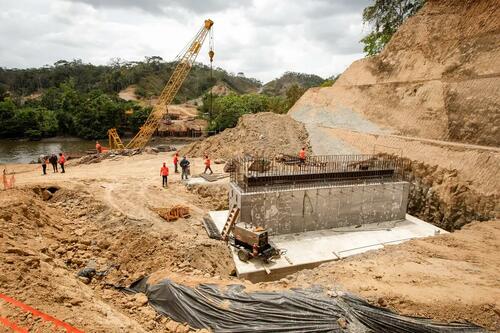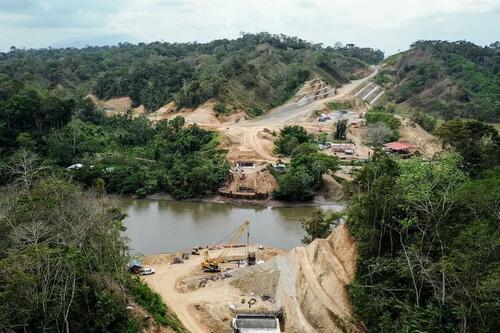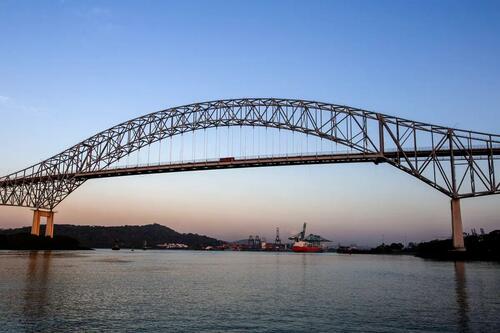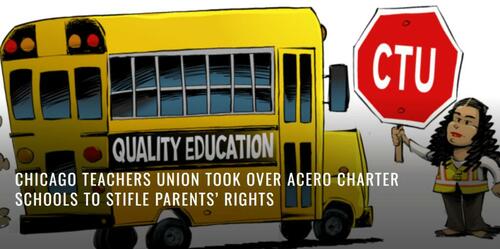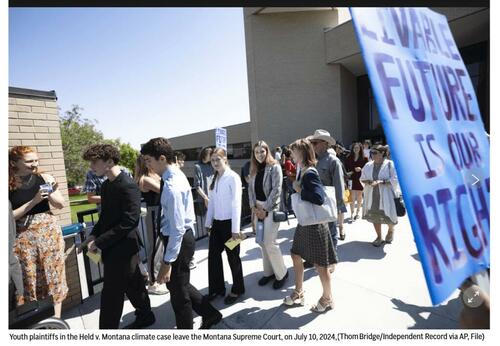Authored by Jayant Bhandari via American Renaissance,
Most Westerners know nothing about India beyond vague ideas about Hinduism, yoga, gurus, and maybe a dash of Bollywood. To such people, this article will be a rude awakening…

I grew up in Bhopal in central India. Since as early as I can remember, I worked in my father’s printing press. I studied engineering in the nearby city in Indore and went to Manchester Business School in Britain to do an MBA. I returned to India to set up a subsidiary of a British company, which was a huge success. When I lived in Delhi, I wrote for the mainstream Indian media. I traveled widely in India and around the world.
I had first returned to India with the idea of improving it, but after 11 years, I realized that India was a sinking ship, with worsening and increasingly shameless corruption, degraded people, and a society that was falling apart. I had never met an honest bureaucrat or politician. I applied to emigrate to Canada and my application was approved in a record three weeks.
I now advise East Asian and Western corporations on investing in India. Most of what I tell them sounds to them exaggerated, unrealistic, and unbelievable. After much dance, drama, and a great deal of lost money, they begin to believe what I tell them. However, this learning is never institutionalized because of a refusal to understand India. This is a form of political correctness, a poison eating away the innards of Western values.
When I was a child growing up in India, I learned that “might makes right.” Power was often abused, with those in control acting as if they had a God-given right to exploit and dominate others. The display of authority could be so extreme that questioning it or expecting those in power to do their duty might lead to retribution. Those in authority seemed to believe that their positions were not for serving others but for personal gain.
People who showed respect appeared to have meekly accepted a lower, subservient position. Kind people had to hide their compassion, for being nice was seen as a weakness.
In India, I have rarely seen someone in authority take the initiative to solve a problem he was responsible for. When I was at university, an underaged boy who worked in the kitchen was raped and sodomized by the janitors. I reported the matter, but not only did no one in authority do what was right — something well within their power — the authorities and fellow students threatened me with severe consequences if I pursued the matter further. Devoid of empathy, they also made fun of the boy and me.
Yes, there is an element of sadism here. There is some degree of pleasure that Indians take in the pain suffered by others. The attitude of the authorities was like that of the high-placed Delhi bureaucrat who told me that his Black Label whiskey tastes so much better because he knows that most Indians can’t afford to drink it.
This confuses Westerners. If they had power, even if they were corrupt, in a situation where there was nothing to gain or lose — no bribes to receive since both parties were poor, and no risk of offending someone well-connected — they would do the right thing and book the alleged rapist. These Indians would do nothing, not even lift a finger, unless there was a reward: money or sex. Their apathy was bottomless.
Doing your job may be seen as effeminate by those above you. If you can shirk your responsibilities, you’re considered macho. In that culture, there is rarely any pride or honor in doing what is right. If you call a plumber for repairs, he will see it as beneath him to leave without creating a mess. He may deliberately do a shoddy job, even if doing it well wouldn’t take more time. A complex web of arrogance, egotism, servility, casteism, tribalism, and magical thinking drives this behavior. He shows his contempt for you and gets the better of you by leaving a mess. His customer, as the other side of the same coin, might well look down on and exploit someone who did his job well.
If you do a bad job, does that mean you do not get called back? That doesn’t matter to people who have no standards to begin with and who do not think ahead. There is little positive feedback to those who want to do better, be fair, or make better products.
Fairness, justice, trust, empathy, and impartiality are alien to many Indians. They have a hard time telling the difference between right and wrong. They are indifferent even when no cost is associated with being fair. Moreover, if they could do good without any personal cost, they would still prefer not to, because that can be seen as a sign of weakness.
Indians are indoctrinated to be submissive. The indoctrination is so profound that Indians address those even slightly above them in authority as “sir.” They tend to be servile, sycophantic, and ingratiating. This should not be mistaken for respect, because respect is foreign to Indians. When they call you “sir,” it reflects their view of you only as the stronger figure in the interaction, consistent with their view that might makes right. They will demean you the moment you are in a weaker position.
You are either higher or lower — therefore, you are either abuser or abused. Equality is impossible. A visitor learns very quickly that saying “please” and “thank you” is seen as a sign of weakness and is reserved for those who wish to demean themselves.
Indians cannot maintain the institutions established by the British. These institutions have been hollowed out and corrupted, becoming predatory. The constitution and laws hold little value. The only forces driving these institutions are bribes and connections. Whether you approach the highest political leaders or the pettiest bureaucrats, they openly and unashamedly demand bribes.

Activists burning an effigy of Congress MP Dhiraj Sahu in protest against corruption and recovering of cash on December 10, 2023 in Patna, India. Photo by Santosh Kumar/Hindustan Times Bihar Politics And Governance (Credit Image: © Imago via ZUMA Press)
Street smarts are highly valued, and criminals who evade justice are celebrated. A relative of mine, brimming with pride, once told me that he would never pay rent for the house he had rented. He had bribed the local authorities to make it impossible for his landlord to throw him out.
When someone in a society without trust is cheated, he rarely seeks justice against the cheater. Instead, he cheats others. Men abuse women, women abuse children, and children abuse animals. Animals attack whatever they can. Higher-caste Indians abuse those in lower castes, while lower-caste people fight with other lower-caste people to determine who is superior. It is a perpetual cycle of mistrust and arbitrariness.
People in the West talk about a system of four or five castes that was formalized by the British. This confuses the issue, for this gives an exaggerated sense of structure. In reality, there are 1.4 billion castes in India. All interactions are about sizing you up. You end up either oppressing others or being oppressed. The so-called lower caste people are more caste conscious than the higher caste people.
Most caste problems in India are described in the news in passive tense. So-and-so was oppressed and abused. Yes, the sufferer is a lower caste person but the oppressor is often of a similarly low caste. When a lower caste person rises in power, he loves showing it off to those from higher castes. What better way to show off power than by abusing others and getting away with it or — if you are a plumber — by leaving a mess? Different people show off power according to what they can get away with.
Many people lie openly. Everyone knows everyone lies, but everyone lies anyway. Many Indians convince themselves of their lies so that they can no longer differentiate between fact and fiction. Even if you don’t have to or want to, you have to exaggerate and lie, for you know your listener will calibrate to what you say. Conversations are often driven by personal material gain. Every transaction is a zero-sum game — or perhaps a negative-sum game, for sadism may be a part of the equation.
You may think you will be safe if you work with family members, but they may turn out to be your biggest enemies, for even they will betray you. Honor is not a part of the social code. Indians are atomized people and do not know loyalty. Indians across the board hide gold in their own houses and do not tell even family members about it.
I have never (I am using the word advisedly) had a contract honored in India. When you bribe, you must do so skillfully. If you have an opposing side in a legal fight, the judge and the police will take bribes from both sides. Your lawyer will collude with the opposing side and with the judge right in front of you to maximize bribes. This might sound unbelievable, but that does not change reality.
The words for most virtues come from Persian, Turkish, or English, not native Indian languages. But just because the words came into the language does not mean Indians accept those virtues; they were perverted and became a façade for the old ways.
Everyone builds solid, high fences around his property. Everyone does this the day he buys a property, because his neighbors will encroach on his land if they can. It took me years after I had moved to the West to understand why people don’t build fences.
When I first traveled to the UK, I was amused to find that animals weren’t fearful of or aggressive toward people. I was surprised that those in power didn’t expect servility or reverence. For years, I felt uneasy, as if I wasn’t fulfilling my part of the transaction unless I paid bribes.
My grandparents and father were honest in financial matters and held themselves to a high standard of self-respect — an anomaly in India. There are good, sane, moral, rational people in India, but I have more fingers than the total number of such Indians I have known; I can find that many honest Americans in one morning. By Indian standards, our family was decent and well-connected. This shielded me from much depravity and made it possible to ignore the stories that I heard.
Among ordinary Indians, conversations revolve around backbiting, gossiping about friends, discussing celebrities, exchanging superstitions, and animosity toward other groups. Hindus hate Muslims, Muslims hate Hindus, and Sikhs hate Hindus. These groups fight among themselves, leaving everyone atomized, but their hatred of other groups superficially unites them.

Demonstrators protest against the sudden “anti-encroachment” drive carried out by the North Delhi Municipal Corporation in Kolkata, India. The NDMC demolished several pavement structures such as shops, shortly after a period of Muslim-Hindu violence. (Credit Image: © Sukhomoy_ Sen/eyepix via ZUMA Press Wire)
I doubt I understood the concepts of honor and loyalty until I had lived in Britain for a year. During that time, someone told me not to exaggerate when promoting the organization I worked for. For the first time, I began to see that people wanted to speak the truth simply for the sake of truth. I had always known the word “truth,” but for the first time, I began to grasp its essence.
The foundational principle to understanding India is that it is an amoral, irrational society devoid of values. Any values you try to instill will slip off, like water off a duck’s back.
I have seen a continual worsening of Indian society. Whatever grace and civility Christian missionaries and European colonizers instilled in Indians has been slowly eroding.
I distinctly recall my first day outside of India. On a train trip from Heathrow Airport to Manchester, I saw what I initially thought were dull-looking houses and clean, unremarkable waterways and air. The lack of hustle and bustle and the calmness of the train ride left me feeling disoriented and gloomy. I didn’t know how to cope with a situation where there was no constant assault on my senses.
With time, I realized that for most Indian immigrants, this led to a compulsive need to recreate India in the ghettos they moved into. They sought the familiar smells, noise, and constant hustle and bustle. They recreated never-ending emotionalism, fruitless conflicts, chaos, and intellectual inbreeding.
When we were granted unhindered access to the school in Manchester and later to the office where I worked, my fellow immigrants and I often wondered if the British were so naïve as to trust us so readily. What was to stop us from stealing everything in sight? Most immigrants never truly grasp the significance of “trust” and “gratitude.” Worse, they discover that complaining often leads to benefits — the only thing they genuinely care about in the multicultural West. Humanistic, civilizational values never touch their hearts.
Once, a friend and I went for a drive in Manchester. Having had a few drinks, he ran a red light and was pulled over by the police. I was stunned by the respect with which the officer treated him. In India, the police would have humiliated and exploited even the passengers. My friend was taken to the police station, and as I was driven there by an officer, I explained how we would have been treated if this had happened in India.
At that time, I was living in a high-crime area of Manchester, and the police sometimes followed me when I walked home. I asked the officer why they never stopped or questioned me. He told me they followed me to ensure my safety and had no authority to stop me without legitimate cause. For the first time, I began to understand the British respect for personal space, another value that was also starting to take root in my mind.
The officer made my friend sit for an hour or two to sober up, and then let him go without booking him. I began to realize that those in power in Britain could apply the law flexibly, considering the spirit behind it; in India, laws were excuses for predation.
Of course, Britain is no longer what it once was. Over the years, policing has evolved to accommodate the challenges presented by the lowest common denominator introduced by immigrants from the Third World.
Statistics fail to resonate in the Indian psyche. There is no sense of a grey area; everything is black or white, with no appreciation for nuance. This lack of proportionality leads to indecisiveness and an inability to value things. In the end, unrestrained emotions drive life. I carried a part of this same mindset with me. Realigning my thinking with reason, morality, and Western values was a difficult task.
I attended one of the best engineering colleges in India and believed myself to be creative, decisive, and well-grounded. However, as I started witnessing social interactions and behavior in Britain, I found I lacked confidence. Even the grocery store owner appeared more confident and decisive. I realized my mind was clouded with confused thinking and conflicting motivations
Even my privileged upbringing in India had ingrained into me layers upon layers of confused worldviews, and dishonest, scheming behavior. Despite my best intentions, shaking them off and rewiring my thinking took decades. Any erroneous belief I became aware of and tried to change clashed with other deeply ingrained beliefs and mental patterns. It was like trying to replace a broken brick in the castle of my cognitive constructs without destabilizing the entire structure. At times, I had to get drunk just to find a fleeting sense of sanity.
With time, I noticed that I began to sleep better and felt mentally freer. Even my body started to change, and the mental cloud that had clogged my thoughts began to lift. A reassuring sense that those around me had my back was immensely helpful. The confusing and contradictory thoughts that had caused chronic stress started to fade.
My grandmother often said two things I once considered backward-looking, but I agree with them today. She believed that some people needed to stay on the edge of starvation because if given more, they would make problems. Despite being one of the most egalitarian people I knew — befriending her chauffeur and tailor — she would remind me that not everyone deserved a seat at the table unless he was fit for it.
“Human Rights” is a Western concept that is incomprehensible to most Indians. They fail to understand respect for the individual. Speaking to them about “rights” only leads to confusion. They fail to differentiate between “negative” and “positive” rights. For instance, when taught about property rights, they learn to protect their property but fail to recognize the rights of others. Women, when taught that rape is a violation, might begin to see it in every situation and use it as a tool to exploit men. As they are introduced to the concept of rights, they shift from accepting their wretched lives to adopting a resentful, victim mentality.
You cannot teach people anything good until they have the foundations of morality, rationality, causality, and other Western values. Without these foundations, the fruits of Western civilization serve only to turn people’s often-hidden hedonic tendencies into something more malevolent. Every civilizational fruit — education, Western clothing, prosperity, Western institutions — has been perverted in India.
The institutions left behind by the British have been hollowed out, becoming purely predatory and sadistic. This occurred because, in post-British India, those in power prize expediency and acquiring wealth as life’s sole purposes. Today’s India lacks even the vague rule of law that existed before the arrival of the Europeans. This is why it will be an improvement when India eventually collapses and the Taliban-like authoritarian system that existed before the British reemerges from the ashes.
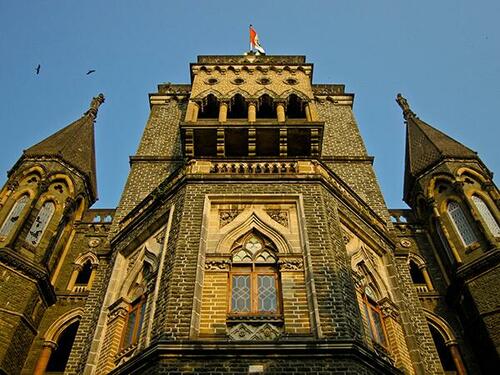
The High Court of Bombay, designed by British engineer Col. James A. Fuller. Credit: benbeiske via Flickr, CC BY-NC-SA 2.0.
Without Western missionaries at the helm, Christianity has been “nourished” by Indian superstitions and magical thinking and has become voodoo. Grammar has fallen by the wayside, and English has often become pidgin.
Education and Western clothing have been adopted with a cargo-cult mentality. The focus is on obtaining certificates and wearing suits, as if these outward symbols alone confer status and material benefits. Similarly, education is not viewed as a means to foster intellectual growth or evolve into better human beings. Instead, driven by animalistic desires, expediency, and the unethical pursuit of resources, most Indians scorn the idea of self-improvement.
Education applied to an irrational mind that processes information through magical thinking becomes burdensome, making such people worse than their uneducated counterparts.
The Indian mind should have been made moral and rational and imbued with honor, discipline, respect, and integrity, before being formally educated and provided with the fruits of Western civilization. Alas, this would have been, at best, a millennia-long process.
In economics, there is a concept of the “middle-income trap.” I prefer to call India’s situation the “low-income trap.” Contrary to the beliefs of professional economists, these traps have cultural underpinnings; it is virtually impossible to escape.
Prosperity has led to neither social peace nor intellectual and spiritual growth. Indians do not understand the concept of comfort. Most rich Indians build garish houses not for comfort but to display wealth and control those weaker than themselves. Worse, the easy prosperity of recent decades, which is essentially a result of Western technological advancements, has derailed the pursuit of rationality and morality. Social media are a platform for exchanging myths, superstitions, and pornography. The IT revolution does not bring enlightenment to the poorest parts of the world!
Today, India is more entrenched in magical thinking and superstition than in the past. Hedonism is rampant, and families are falling apart.
When elevated to high positions, most Indians become arrogant and sadistic. This is less from a desire to mask their incompetence and psychological weaknesses and more from a genuine belief that arrogance and sadism define power and class. This also serves as a way to cope with the deep-seated inferiority complex instilled by their culture. Whatever grace and civility had once been imbued in Indians by colonizers has eroded.
The wealth created by the West hypnotizes Indians. However, they fail to understand the underpinnings of that wealth. They equate the West with Hollywood stereotypes: girls in short skirts, promiscuity, drinking and drugs, flaunting wealth, working in plush offices, and controlling others. This is the true soul, once obscured by Victorian morals and Islamic constraints. It is a return to a pre-colonial, pre-Victorian, hedonistic culture.
The British were a godsend. Without them, the situation has continued to worsen. India will eventually nullify all the benefits it got from the West and revert to its pre-colonial ways. It will fall apart, and I wouldn’t be surprised if much of its population falls prey to war and famine and declines to the level it was before the arrival of Europeans.
Most Indians cannot think beyond money, sex, and survival — just what you would expect of a society with an average IQ of 77. Every Western value given to them has been caricatured and corrupted for these ends. Indians have no Ten Commandments. They are so unaware of these values that they remain oblivious even if they are forcefully presented to them. There is nothing you can do about this, except to try to understand what immigration from India and the rest of Third World will do to the West.
* * *
This article has been adapted from a recent speech given at the Property and Freedom Society conference in Bodrum, Turkey.

